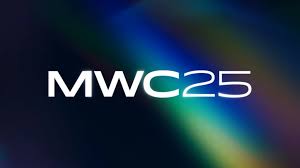Innovations at MWC 2025
Science & Technology SciencePosted by NewAdmin on 2025-03-06 08:50:35 |
Share: Facebook | Twitter | Whatsapp | Linkedin Visits: 64

The Mobile World Congress (MWC) 2025 featured a range of groundbreaking innovations in the mobile and telecom industries. Among the standout gadgets was Xiaomi's detachable camera module, allowing users to swap out cameras for different photography needs. Realme introduced a smartphone concept that supports DSLR lenses, bridging the gap between mobile photography and professional-grade cameras. SunLED showcased its SunBooster technology, which mimics natural sunlight indoors, potentially revolutionizing indoor lighting. Other exciting innovations included a smartphone with an integrated projector and a tri-fold smartphone design, pushing the boundaries of flexible displays and mobile productivity.
Beyond hardware, MWC 2025 also focused on AI and telecom advancements. LG Uplus introduced ixi-GEN, a generative AI model designed specifically for telecom applications, undergoing security tests to ensure reliability in customer service roles. Microsoft expanded its AI-powered network solutions, strengthening its presence in the telecom sector. The event also saw the launch of Network-as-a-Service (NaaS) APIs by MEF, allowing enterprises to dynamically optimize network performance for AI applications, cloud gaming, and IoT. T-Mobile adopted Red Hat OpenShift to unify its telco cloud, accelerating 5G, edge computing, and private network deployment. These innovations highlight MWC 2025’s role in shaping the future of mobile technology, connectivity, and AI integration.
Search
Categories
Recent News
- Hyderabad's Biryani Scam: When Food Delivery Meets Fraud
- RBI's UDGAM Portal: Hyderabad's Cyber Fraud Warning
- Hyderabad Gears Up for Presidential Visit: Traffic Advisory Issued
- Hyderabad Crypto Scam: Unraveling a Multi-State Fraud
- Cyber Scams Target Unsuspecting Citizens via RBI Portal
- Telangana's Tech-Driven Policing: Drones Take to the Skies
- RBI Governor Prioritises Digital Security: A Strategic Shift
- Hyderabad's Massive Anti-Drug Operation: 72 Foreigners Deported
Popular News
- Navigating IPO Market Dynamics Amid Volatility and Regulatory Changes
- Innovative Green Practices and Environmental Initiative
- Massive Worldwide Microsoft Outage Disrupts Multiple Sectors
- తెలుగుదేశం పార్టీ - పేదరికాన్ని నిర్మూలించడంలో వాగ్దానం
- Universities Embrace Remote Learning Technologies Amidst Ongoing Pandemic